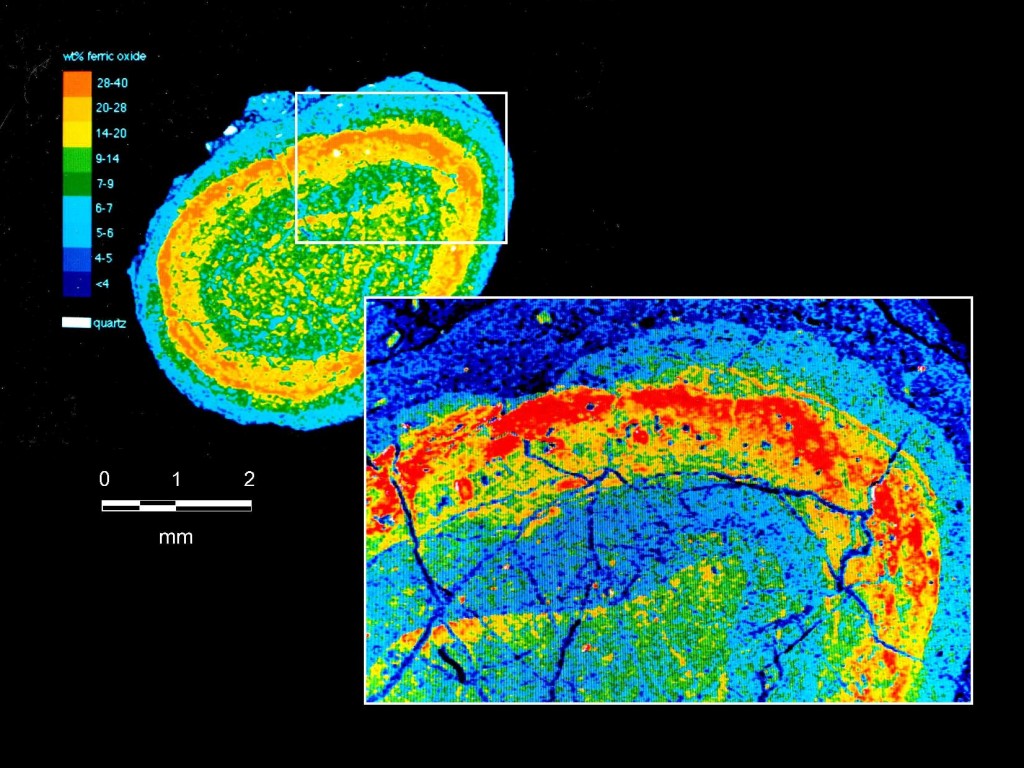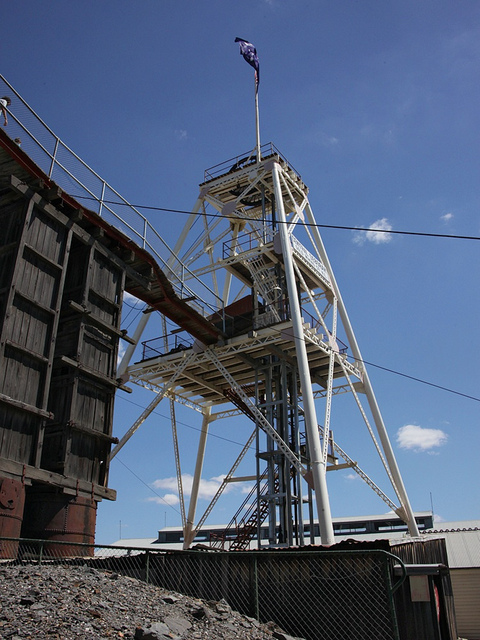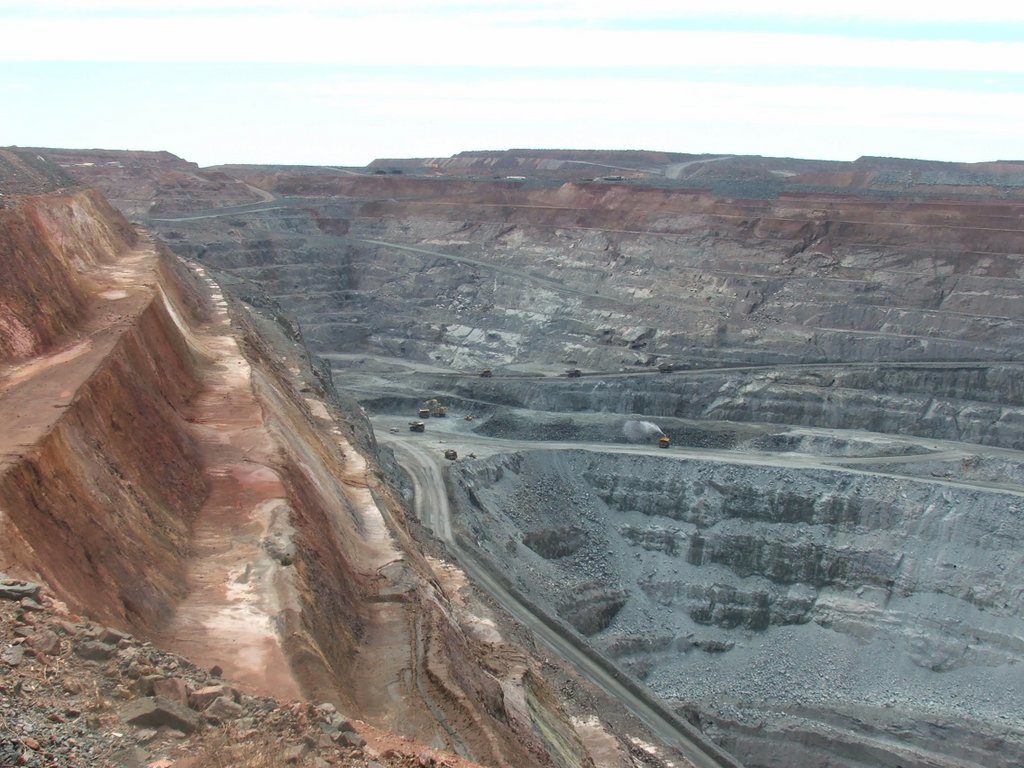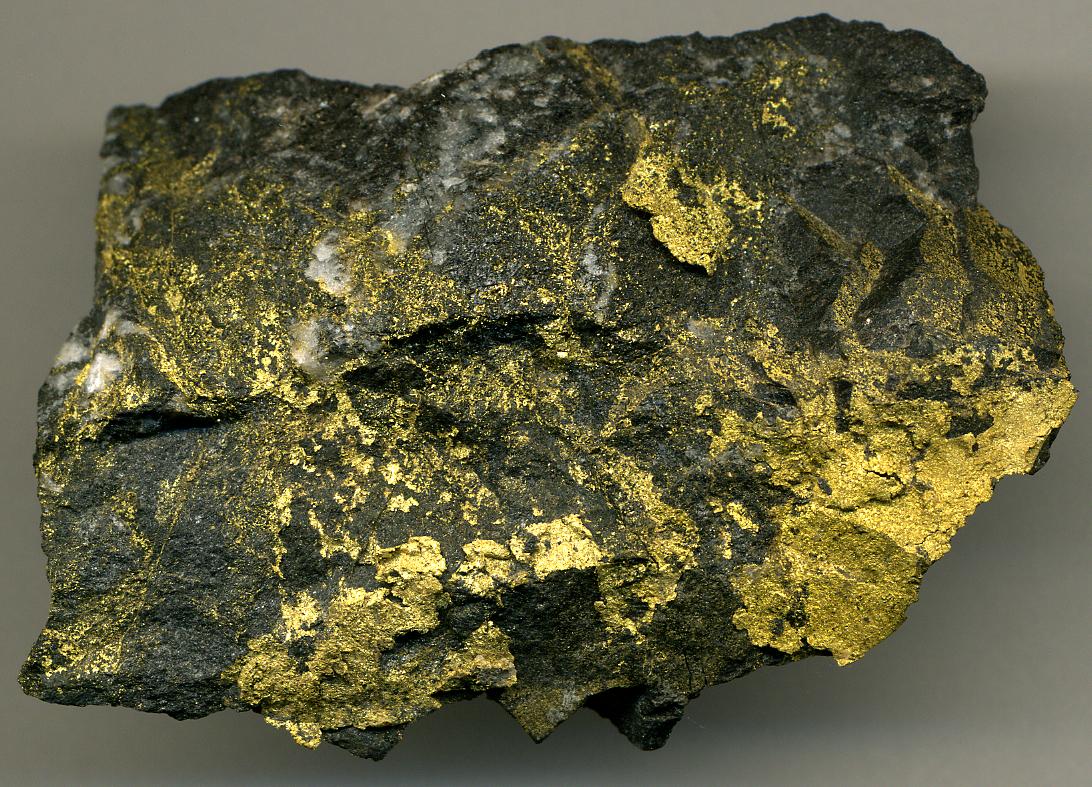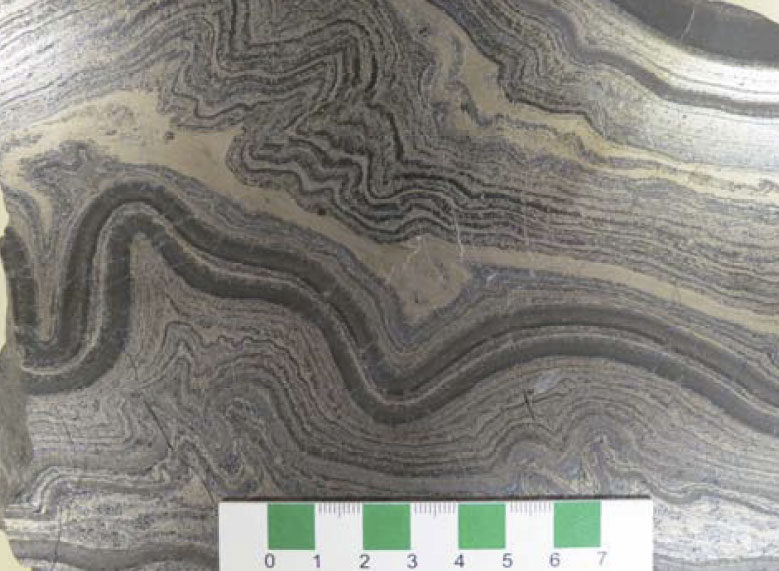Overview
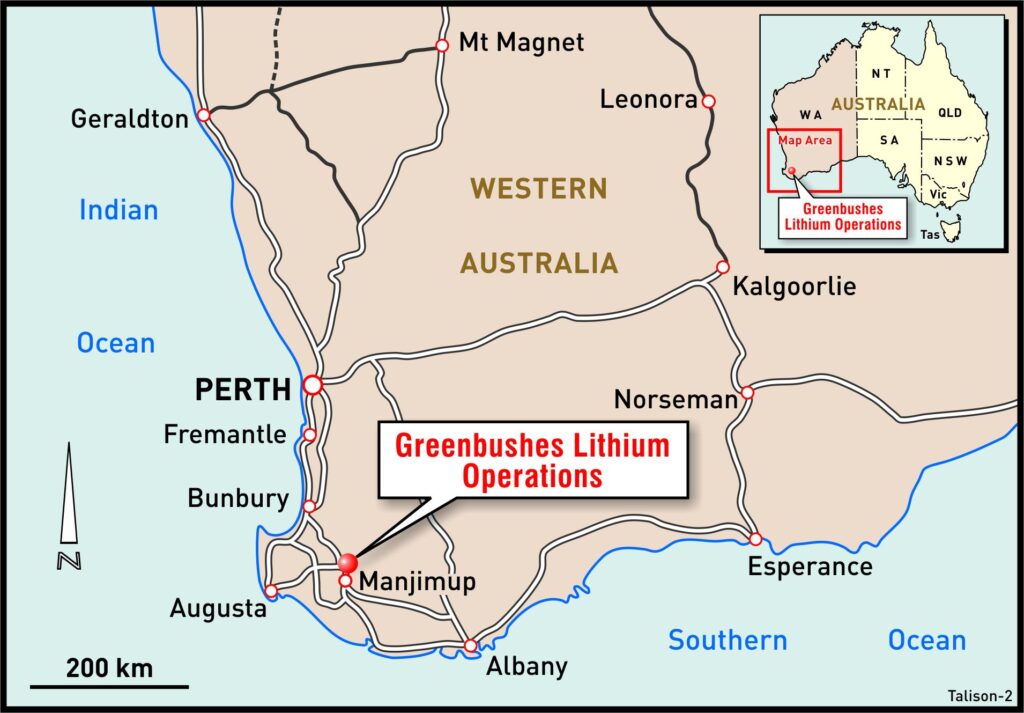
The Greenbushes lithium deposit is located in the southwest of Western Australia, approximately 250 km south of Perth, and 90 km southeast of the Bunbury port (Figure 1). The operation is owned by Talison Lithium, a joint venture between Tianqi Lithium Corporation (SZSE:002466) and the Albemarle Corporation (NYSE:ALB). Open pit mining is conducted by conventional drill and blast methods, with gravity and magnetic ore separation, followed by flotation. Historical mining in the Greenbushes area, initially for tin, was first undertaken in the late 1800s. The mine has been in operation for over 25 years and has an estimated life of mine of 40 years (Figure 2). The Greenbushes deposit has the highest grade lithium mineral resource in the world at 3.9% Li2O, compared to 1.0-2.0% Li2O normally documented for other hard rock deposits. Lithium ore in the form of the mineral spodumene (LiAl(SiO3)2) is mined from unweathered zones of the pegmatite. Other products include tin and tantalite concentrate. According to the most recent ore resources available, proven and probable mineral reserves of 86.4 Mt at 2.35% Li2O are estimated for the Greenbushes lithium operation. The mine is evaluated to contain approximately 4Mt of lithium carbonate-equivalent (LCE).
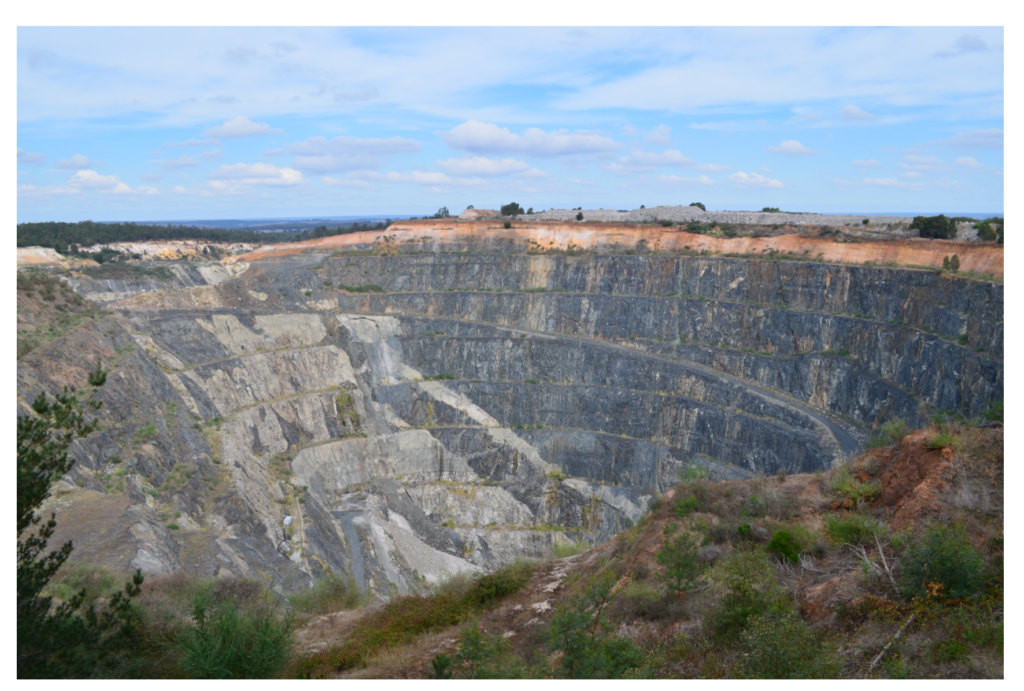
Regional Geology
The Greenbushes deposit is located in a 15-20 km wide north to northwest trending regional lineament (the Donnybrook-Bridgetown shear zone) in the Balingup Metamorphic Belt. Limited exposure of the Balingup Metamorphic Belt reflects its extensive overprint by Tertiary (66-2 million years ago) sediments and laterite (an iron-rich, highly weathered soil formed in tropical and subtropical regions with humid climates). The Greenbushes pegmatites, estimated to be 2,525 million years old, show similar fabric as the shear zone they are hosted in, which suggests their synchronous emplacement with regional deformation. These intrusions were later affected by deformation and hydrothermal alteration at ~1100 million years ago.
Deposit Geology
The Greenbushes orebody comprises zoned pegmatite intrusions that are 3 km long and up to 300 m wide, and dip approximately 45° to the west. The pegmatites occur as a series of linear dikes intruded along a north to northwest trending shear zone (Figure 3). The main country rocks in the Greenbushes deposit include (i) amphibolite to ultramafic schist, (ii) ‘granofels’ (i.e. metasedimentary rocks and quartz-feldspar-biotite gneisses), and (iii) late dolerite dikes. Two major intrusive events recorded in the Greenbushes district include an older event that predates the mineralization, and a younger one that is coeval with the Greenbushes pegmatites. The last magmatic event was followed by amphibolite facies metamorphism.
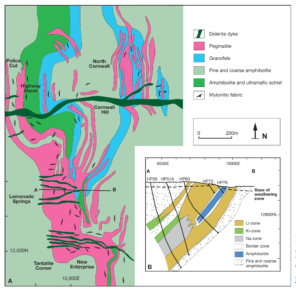
The Greenbushes pegmatites reveal a distinctive mineralogical zonation. This zoning is characterized by lithium, potassium (K)-feldspar, and albite zones, which are shown in Figure 3 as Li zone, Ki zone, and Na zone, respectively. This mineralogical zonation is considered to be at odds with other similar deposits because the lithium zone, presumably the last zone to crystallize, occurs both in the hanging wall and footwall of local faults, as opposed to occurring in the center of the pegmatite. No significant mineralization is associated with the K-feldspar zone, which is rare in other pegmatites. The albite zone is characterized by tantalum and niobium contents that generally occur as niobium-tantalite minerals. Lithium mineralization is mainly characterized by spodumene (LiAl(SiO3)2) containing up to 8% Li2O. Minor lithium-bearing minerals include mica (lepidolite) and phosphates (amblygonite and lithiophilite). High-grade lithium ore typically comprises equal amounts of quartz and spodumene with 4% Li2O grade (Figure 4).
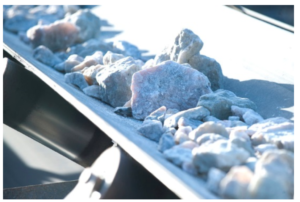
Discussion
A recent rise in the global demand for lithium-ion batteries, largely due to the electric vehicle boom, has ignited the search for lithium sources around the world (Figure 5). The most significant sources of lithium include brines and pegmatites (aka hard rock deposits).
Brine deposits, the most common type of lithium deposits, are characterized by accumulations of saline groundwater that are enriched in dissolved lithium. The 3,000 km2 Salar de Atacama in Chile is the world’s largest lithium brine mine (6.4 Mt at 0.14% Li2O), which is operated by the SQM – Sociedad Quimica y Minera de Chile S.A. (NYSE:SQM). This type of deposit has recently gained more interest due to the lithium rush driven by Tesla’s (NASDAQ:TSLA) lithium-ion battery gigafactory in Nevada. The only active operation producing lithium from brine deposits in the US is the Albemarle Corporation’s (NYSE:ALB) Silver Peak lithium mine, in Nevada.
The Greenbushes operation produces two types of lithium concentrates: (i) technical-grade lithium concentrate with low iron content used to manufacture glass, ceramics, and heat-proof cookware, and (ii) high yielding chemical-grade lithium concentrate, used to produce lithium-ion batteries for computers, mobile phones, and electric cars.
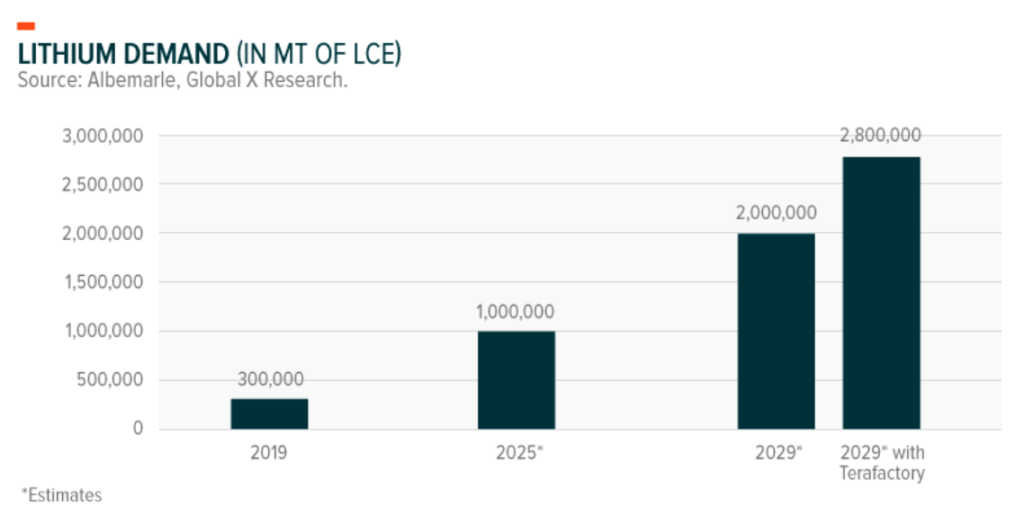
Implications for Hard Rock Lithium Exploration Worldwide
The age of the pegmatite intrusion may provide a first-order filter when exploring for similar lithium-bearing sources in underexplored regions. New deposits are likely to exist near fertile granitic intrusions, which can be identified by distinctive mineralogy, e.g. muscovite, tourmaline, and garnet, and by an anomalous concentration of caesium, lithium, rubidium, tin, and tantalum. Soil anomalies are expected in weathered deposits, like the Greenbushes. Whole-rock geochemistry can be used to establish pegmatite zonation, alteration patterns and stratigraphy. Because lithium content cannot be directly determined by pXRF (portable X-ray fluorescence), a proxy for lithium grades can be effectively acquired by the detection of pathfinder elements, e.g. rubidium, niobium, yttrium, caesium, tin, tantalum, tungsten, and boron. Therefore, pXRF can be used to identify fertile intrusions with high caesium, rubidium, tantalum, and tin, in tandem with low potassium/rubidium ratios.
Investor Takeaways
Despite accounting for only ~25% of lithium production worldwide, pegmatite-hosted ‘hard rock’ lithium deposits seem more advantageous than brine deposits. The major drawbacks related to brine deposits include overall lower grades, wide compositional range, ambiguous recovery rate and longer time frame required to implement and/or enlarge existing facilities. Regardless of their relative abundance and generally lower cost of production, brines found within closed basins in arid regions can only form in certain places. Thus, they are more dependent on climate conditions and geographic location. Additionally, ore from brine deposits also requires longer processing periods. On the other hand, hard rock lithium deposits show higher grades and are more evenly distributed, making them an excellent opportunity to promote a country’s source of lithium.
Further Reading
Partington, G.A., 1988. The geochronology, tectonic environment and structural controls on intrusion of the giant rare-metal pegmatite at Greenbushes, Western Australia. Unpublished PhD thesis, Perth, University of Western Australia, 120 p.
List of Companies Mentioned
– Talison Lithium Pty Ltd (website)
– Sociedad Quimica y Minera de Chile S.A., or SQM (website)
– Tesla (website)
– Albemarle (website)
Subscribe for Email Updates

